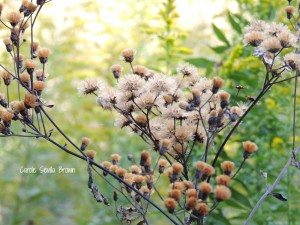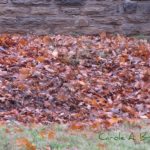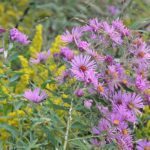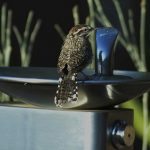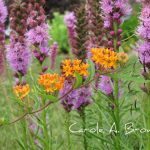Traditional gardening protocol tells us that autumn is the time to “clean up” your garden. But Ecosystem Gardening is a new kind of gardening for a new kind of gardener, and many of the chores you’ve been taught must be done in fall may actually harm the wildlife you’ve worked so hard to attract to your garden.
We’ve been taught to rake up every leaf, cut back every plant, and make our gardens tidy and pristine so that not one thing is messy or out of place. But this sterile environment really does nothing to help the birds, bees, butterflies or other wildlife who make their homes in our gardens, and may in fact even lead to their death.
Since Ecosystem Gardening is all about creating welcoming habitat for wildlife in our gardens, I took a look at how to preserve wildlife habitat when cleaning up the wildlife garden in the autumn.
Performing a fall clean-up in your wildlife garden can be a great way to prepare your garden for the winter months and ensure its health and beauty for the following year. However, it’s important to take steps to minimize the impact of your clean-up on the wildlife that lives in your garden. Here are some tips for conducting a wildlife-friendly fall clean-up:
- Avoid using chemicals: When cleaning up your garden, avoid using pesticides or other chemicals that could harm the wildlife in your garden. Instead, opt for natural methods of controlling pests, such as companion planting and hand-picking.
- Leave leaves and stems: Rather than removing all the leaves and stems from your garden, consider leaving some of them on the ground. These can provide a source of food and shelter for a variety of wildlife, including birds, insects, and small mammals.
- Prune carefully: When pruning plants and trees, be sure to do so carefully and thoughtfully. Avoid cutting back plants too severely, and try to leave some of the branches and twigs for birds to use for nests.
- Provide winter habitats: Consider leaving some areas of your garden untouched, or creating special habitats for wildlife to use during the winter months. For example, you could leave piles of leaves, twigs, and branches for birds and insects to use for shelter and nesting.
- Use the right tools: When cleaning up your garden, make sure to use the right tools for the job. Avoid using large, heavy equipment that could damage the soil and disrupt wildlife habitats.
By following these tips, you can help to minimize the impact of your fall clean-up on the wildlife in your garden, while still preparing your garden for the winter months. With a little effort, you can maintain the health and beauty of your garden while supporting the local wildlife and creating a healthy, sustainable ecosystem.
More From Ecosystem Gardening:
Submit your review | |

